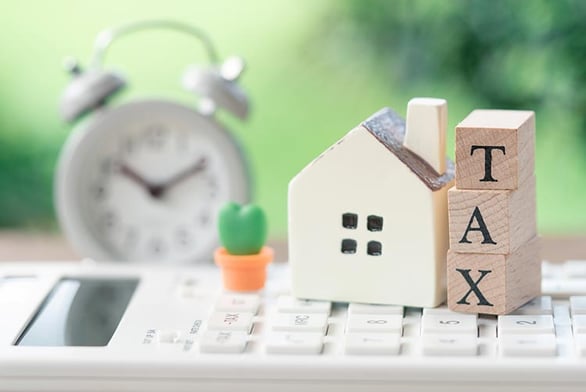
There are many strategies you can use to reduce your tax liabilities, which is the money you’ll have to pay to the Internal Revenue Service each tax year.
Contributions to traditional 401(k), self-directed retirement accounts, or health savings plans are common methods used to reduce exposure to taxation. Gig workers and self-employed individuals, meanwhile, can claim home office and scores of other business deductions to lower their taxable income.
Other common ways to reduce your tax liabilities include deducting private mortgage insurance premiums, making charitable deductions, and claiming itemized deductions when they outweigh the 2021 standard deduction of $12,550 for individual filers and $25,100 for married couples filing jointly.
Real estate investors have some additional options when it comes to reducing their tax liabilities, especially after the sale of an investment property.
Strategies to Reduce Your Exposure to Taxation
With planning and prudence, real property investors can reduce their exposure to capital gains taxes when selling assets held for investment.
Holding time
A simple strategy to reduce your tax liabilities involves holding time. Investors who hold a property for less than one calendar year will have to pay taxes on any gains at the standard rate determined by their income level and filing status -- which could be as high as 37 percent for more well-heeled investors. Long-term capital gains, on the other hand, are taxed between 0 and 20 percent depending on income and filing status.
There are other potential benefits to holding an investment property for longer than a calendar year as well, including rental income and asset appreciation. Lastly, if you purchase a residential investment property and end up living in it for two or more years, you are exempt from $250,000 in capital gains for single taxpayers and $500,000 for married filers when you divest the asset.
Defer Capital Gains Using a 1031 Exchange
Real estate investors have an important tool in their toolbox that has the potential to significantly reduce their exposure to taxation.
Under IRS Code Section 1031, taxpayers can defer capital gains taxes on the sale of investment properties if they roll proceeds over into like-kind replacement assets. Real property investors have long deployed this strategy to manage their tax liabilities when selling investment properties. You can defer all your capital gains and depreciation recapture taxes if you purchase a replacement asset of equal value, but if the replacement asset is less than the original asset, you’ll have to pay taxes on that amount, which is called “boot.”
Additionally, you can keep completing 1031 exchanges to continually defer any additional tax liabilities on the sale of swapped assets provided you keep rolling your proceeds over into replacement investment assets. This strategy is often called “swap til you drop,” because you can swap properties until your death. If you bequeath real property assets acquired through 1031 exchanges to your heirs, they will receive a step-up in basis on those assets that could potentially wipe out any accumulated capital gains tax liabilities.
Keep in mind, though, that if you sell any asset acquired through a 1031 exchange without reinvesting the proceeds into a like-kind asset, you’ll have to pay the accumulated capital gains and depreciation recapture taxes.
Holding time is important for 1031 exchanges as well. The IRS has not provided definitive guidance on what constitutes safe harbor before completing an additional 1031 exchange, but two years is generally viewed by tax experts as the safe minimum amount of time to hold investment assets acquired through the exchange process. You’ll also want to show rental income during that time to make it clear that the property was purchased for investment purposes -- holding assets for a potential increase in valuation through appreciation does not qualify.
The Bottom Line
Paying taxes is a part of life. There are many strategies you can employ to reduce your tax liabilities, however, from maxing out contributions to employer-sponsored retirement plans to the many tax breaks afforded to real estate investors. Consult with a qualified tax professional before selling an investment property and undertaking a 1031 exchange; however, as there are many important regulations and deadlines that must be met lest you trip up and leave yourself exposed to hefty capital gains tax liabilities.
This material is for general information and educational purposes only. Information is based on data gathered from what we believe are reliable sources. It is not guaranteed as to accuracy, does not purport to be complete and is not intended to be used as a primary basis for investment decisions. It should also not be construed as advice meeting the particular investment needs of any investor. Realized does not provide tax or legal advice. This material is not a substitute for seeking the advice of a qualified professional for your individual situation. Costs associated with a 1031 transaction may impact investor’s returns and may outweigh the tax benefits. An unfavorable tax ruling may cancel deferral of capital gains and result in immediate tax liabilities.



